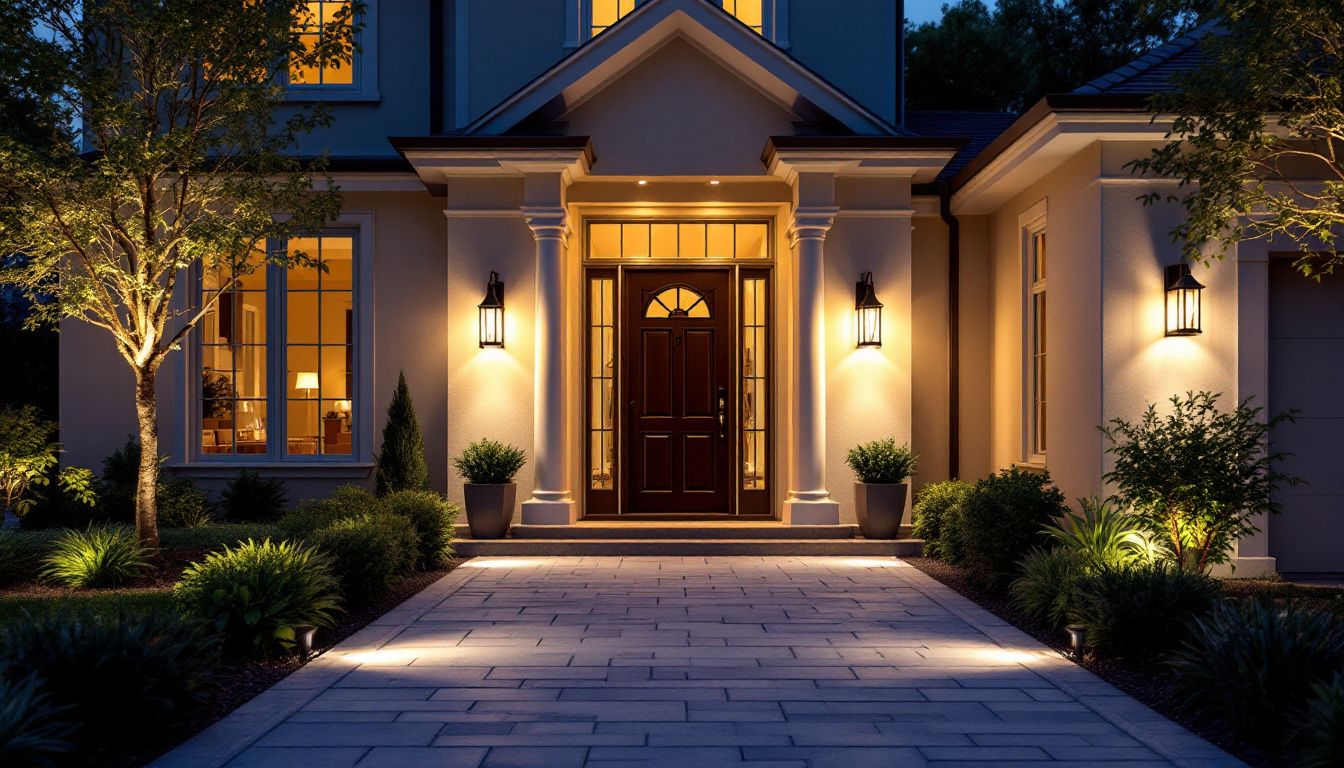
In the world of modern lighting design, LED lights have become a popular choice for track lighting systems. Their energy efficiency, longevity, and versatility make them ideal for various applications, from residential to commercial settings. However, even experienced lighting contractors can make mistakes when integrating LED lights into track lighting systems. This article explores common pitfalls that contractors should avoid to ensure optimal performance and satisfaction for their clients.
Before diving into specific mistakes, it is crucial for lighting contractors to have a solid understanding of LED technology. LEDs, or Light Emitting Diodes, operate differently than traditional incandescent or fluorescent bulbs. Their unique characteristics can lead to misunderstandings that may result in subpar installations. Unlike conventional bulbs, LEDs are more energy-efficient and have a longer lifespan, but they also require a different approach to installation and design. Understanding the nuances of LED technology is essential for ensuring that contractors can provide optimal lighting solutions that meet both aesthetic and functional needs.
One of the most common mistakes is overlooking the importance of color temperature when selecting LED lights. Color temperature, measured in Kelvin (K), significantly impacts the ambiance of a space. For instance, warm white light (around 2700K) creates a cozy atmosphere, while cool white light (around 5000K) is often associated with a more clinical or energetic feel. The choice of color temperature can also influence how colors appear in a room, which is particularly important in settings such as art galleries or retail spaces where accurate color representation is key.
Contractors should consult with clients to determine the desired mood for each space. Failing to match the color temperature to the intended use can lead to dissatisfaction and may require costly replacements later on. Additionally, it’s worth noting that the same color temperature can look different depending on the surrounding colors and materials in a room. Therefore, testing samples in situ before making final decisions can be a valuable step in the design process, ensuring that the lighting enhances the overall aesthetic rather than detracting from it.
Another frequent oversight is not properly calculating the required lumens for a given space. Lumens measure the total amount of visible light emitted by a source, and understanding this metric is essential for effective lighting design. Each area has different illumination needs based on its size, purpose, and the presence of natural light. For example, a kitchen may require higher lumens for tasks such as cooking and food preparation, while a bedroom may benefit from softer, more subdued lighting for relaxation.
Contractors should conduct thorough assessments to determine the appropriate lumen output for each track light. Underestimating or overestimating lumens can lead to poorly lit spaces or excessive glare, both of which can detract from the overall aesthetic and functionality of the area. It is also important to consider the placement of fixtures and the use of dimmers, which can provide flexibility in adjusting brightness levels according to the time of day or specific activities. By taking the time to evaluate these factors, contractors can create a well-balanced lighting scheme that enhances the user experience and meets the specific needs of each environment.
Installation is a critical phase in any lighting project, and mistakes made during this stage can have lasting repercussions. Proper installation ensures that LED lights perform optimally and meet the expectations set during the design phase. Moreover, the installation process can significantly impact energy efficiency and the longevity of the lighting system, making it essential for contractors to approach this phase with diligence and expertise.
One of the most significant errors contractors can make is not providing an adequate power supply for LED track lighting. Unlike traditional bulbs, LEDs require specific voltage and wattage levels to function correctly. If the power supply is insufficient, it can lead to flickering, dim lighting, or even complete failure of the fixtures.
Contractors should carefully assess the electrical requirements of the LED lights being used and ensure that the power supply can accommodate them. This includes considering the total wattage of all fixtures on the track to avoid overloading the circuit. Additionally, it’s important to account for any future expansions or modifications to the lighting system, as this foresight can save time and resources down the line. Utilizing a power supply with a higher capacity than currently needed can provide flexibility for future upgrades, ensuring that the lighting system remains adaptable and efficient.
The layout of track lighting is crucial for achieving the desired effect. A common mistake is placing track lights too far apart or in a way that does not adequately illuminate the intended areas. This can result in dark spots and uneven lighting, which can be frustrating for clients.
To avoid this, contractors should take the time to plan the layout meticulously. Consideration should be given to the type of space, the activities taking place, and the placement of furniture or other elements that may obstruct light. A well-thought-out design will enhance the overall effectiveness of the lighting system. Furthermore, incorporating adjustable track heads can offer versatility, allowing users to direct light where it is most needed, whether for highlighting artwork, providing task lighting in workspaces, or creating ambient lighting for social gatherings. This adaptability not only improves functionality but also enhances the aesthetic appeal of the space, making it more inviting and visually pleasing.
As technology evolves, so too do the components used in lighting systems. Compatibility between different elements is vital for a successful installation. Many contractors mistakenly assume that all LED lights will work seamlessly with existing track systems or dimmers.
One of the most common compatibility issues arises from using LED lights that are not designed for specific track systems. Different track lighting systems have unique configurations and specifications, and using incompatible fixtures can lead to poor performance or even damage.
Contractors should always verify that the LED lights being selected are compatible with the track system in use. This includes checking the type of connector, the physical dimensions of the fixtures, and the electrical requirements. Ensuring compatibility will save time and resources in the long run.
Another area where compatibility issues arise is with dimming systems. Not all LED lights are dimmable, and even those that are may not work with every dimmer switch. Using an incompatible dimmer can result in flickering, buzzing, or failure to dim properly.
Contractors should educate themselves on the dimming capabilities of the LED lights they are using and ensure that the dimmer switches selected are designed for use with LEDs. This will enhance the overall user experience and prevent potential frustrations for clients.
While LEDs are known for their energy efficiency, misconceptions can lead to mistakes that undermine this advantage. Understanding how to maximize energy savings is essential for contractors looking to provide value to their clients.
Many contractors fail to consider the energy ratings of the LED products they choose. Not all LED lights are created equal, and some may have higher energy consumption than others. Selecting products without reviewing their energy ratings can lead to increased operational costs for clients.
Contractors should prioritize energy-efficient products with high ratings. This not only benefits clients financially but also aligns with the growing demand for sustainable and eco-friendly solutions in the lighting industry.
Another mistake is not taking the time to educate clients about the energy efficiency benefits of LED lighting. Clients may have preconceived notions about lighting costs and energy consumption, leading them to choose less efficient options.
Contractors should provide clear information about the long-term savings associated with LED lighting, including reduced energy bills and lower maintenance costs. This knowledge empowers clients to make informed decisions and appreciate the value of investing in quality LED solutions.
Even after installation, the relationship between contractors and clients does not end. Providing ongoing support and maintenance is crucial for ensuring the longevity and effectiveness of LED track lighting systems.
Many contractors overlook the importance of providing maintenance recommendations to clients. LED lights have a long lifespan, but they still require periodic checks to ensure optimal performance. Dust accumulation, for example, can significantly reduce the brightness of the fixtures over time.
Contractors should educate clients about the importance of regular maintenance, including cleaning and inspecting the fixtures. Providing a maintenance schedule can help clients keep their lighting systems in top condition, enhancing their satisfaction and prolonging the life of the installation.
After the installation is complete, some contractors fail to offer follow-up support. Clients may have questions or encounter issues that require assistance. A lack of support can lead to frustration and dissatisfaction, potentially damaging the contractor’s reputation.
Establishing a follow-up protocol can help ensure that clients feel supported long after the installation is complete. Whether through scheduled check-ins or an open line of communication, providing ongoing support fosters positive relationships and encourages repeat business.
Incorporating LED lights into track lighting systems presents numerous opportunities for lighting contractors. However, avoiding common mistakes is essential for maximizing performance and client satisfaction. By understanding LED technology, ensuring proper installation, addressing compatibility issues, promoting energy efficiency, and providing ongoing support, contractors can elevate their services and deliver exceptional results.
Ultimately, the goal is to create well-lit spaces that enhance the aesthetics and functionality of any environment. By learning from past mistakes and continuously improving practices, lighting contractors can position themselves as trusted experts in the field, paving the way for future success.
Ready to avoid the common pitfalls of LED track lighting and deliver exceptional results to your clients? At LumenWholesale, we provide lighting contractors with the spec-grade lighting products you need at wholesale prices that can’t be beaten. Our extensive selection is designed to meet the highest industry standards, so you can trust the performance and reliability of every light you install. Plus, with free shipping on bulk orders, you can get the premium lighting your projects deserve at the best value — no hidden fees, no compromises. Elevate your lighting game and experience Wholesale Lighting at the Best Value with LumenWholesale today.

Discover the frequent pitfalls lighting contractors encounter when installing exterior entry lights.

Discover the growing importance of porch ceiling light fixtures in the lighting industry.

Discover the advantages and drawbacks of using closeout light fixtures in your projects.

Discover why sourcing hospital bed lights from local distributors might not be the best choice for bulk purchases.